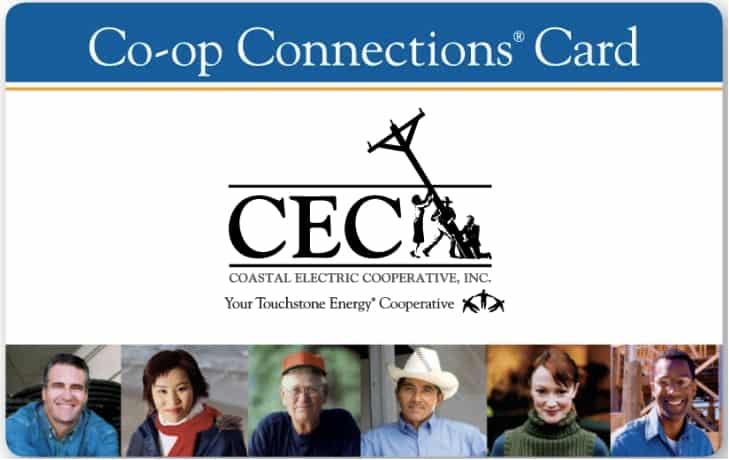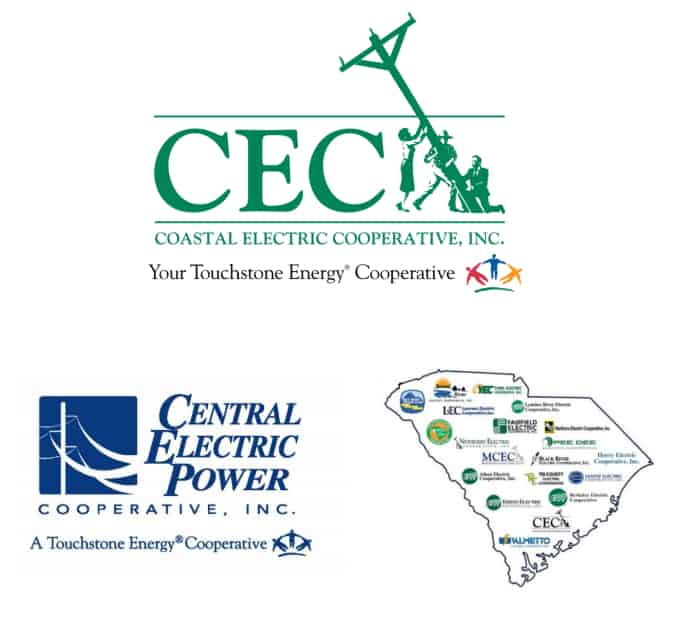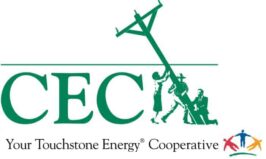About Us

Experience savings on restaurants, golf, shopping, travel, family fun, automotive, movies, insurance… everything you can imagine is here. Co-op Connections has the best deals all in one place.
Integrated Resource Plan, 2021-2040
Cooperatives in South Carolina purchase a variety of resources to ensure your power is reliable and affordable. Coastal Electric Cooperative members consume energy from a variety of energy sources, all of which are shown in the Integrated Resource Plan PDF. It also looks at how we handle energy consumption today, how we'll handle it in the future, how we plan for increased usage, and how we plan to tackle things such as carbon emissions.
Central Electric Power Cooperative, Inc. (Central) is a wholesale electric generation and transmission cooperative (G&T) headquartered in Columbia, South Carolina. Central is owned by the 20 independent, consumer‐owned South Carolina distribution electric cooperatives. They are the group that spearheaded this report and initiative.
Below is a small snapshot of the information contained in the full plan.
In accordance with the amendment of The South Carolina Code of Laws, 1976, section 58-37-40 to include electric cooperatives, Central Electric Power Cooperative Inc. (Central) is submitting its Integrated Resource Plan to the South Carolina State Energy Office on behalf of itself and the 20 South Carolina distribution electric cooperatives.
The IRP’s development included a planning process that was begun in 2019. Central will complete this process every three years, with a review and update in the off years.

Coastal Electric Cooperative, Inc. (Coastal) is a not-for-profit, member-owned corporation headquartered in Walterboro, South Carolina that was created in 1940 to provide electric service to its member-owners. Coastal currently serves approximately 12,000 member-owners who reside in Colleton, Bamberg, and Dorchester counties. Coastal owns and maintains 1,727 miles of distribution lines to serve its member-owners. Coastal’s mission is to improve the quality of life of our members by providing quality electric services at competitive costs with a commitment to member satisfaction.
Coastal and the other 19 South Carolina member cooperatives developed this Integrated Resource Plan (IRP) through their wholesale power provider, Central Electric Power Cooperative Inc. (Central). The IRP is written from the Central perspective and will detail Central and its member cooperatives’ plan to meet forecasted energy consumption and peak demand throughout the defined planning period of the IRP.
Carbon Policy
No comprehensive national regulation of carbon emissions currently exists in the United States, though there have been attempts to enact a federal carbon policy over the years. This included efforts by the U.S. Congress to pass a national cap-and-trade regime, the Environmental Protection Agency’s (EPA) regulation of greenhouse gas (GHG) emissions from new and existing power generators culminating in the Affordable Clean Energy rule (ACE rule), and more recently, proposals in the U.S. Congress for carbon taxes and comprehensive clean energy targets.
South Carolina does not have a state policy limiting or otherwise placing a price on carbon emissions from power generation. However, the potential remains for enactment of such a policy at the national or state level over the study period.
To account for this, a carbon tax sensitivity was created. The carbon tax sensitivity assumed the implementation of a carbon tax starting January 1, 2025. This tax was set at $25 per ton and is consistent with other utility IRPs submitted in South Carolina for 2020. The tax is escalated annually at a general rate of 2.5% through the end of the study period.
Community Solar
Community Solar Central’s board authorized the construction for up to 5 MW (AC) of community solar available to all of Central’s member-cooperatives. Construction on these sites began in 2016, and they are a mixture of ground-mount and canopy configurations. These sites are either owned by Central’s member-cooperatives or Central has PPAs with third party solar developers to purchase the energy output.
Currently, 18 member-cooperatives have access to community solar.
Community solar allows Central’s member-cooperatives to offer their member-owners the opportunity to support renewable generation development without the requirement to install those resources on their homes or property. Member-cooperatives can lease the panels to their member-owners. This opens access to solar energy for renters and mobile homeowners, who would not be able to access solar energy under a rooftop ownership business model.
In total, the sites have generated 18 gigawatt-hours (GWh) of energy since 2016, which would equal the production needed to fully supply 15,000 homes with solar energy.

